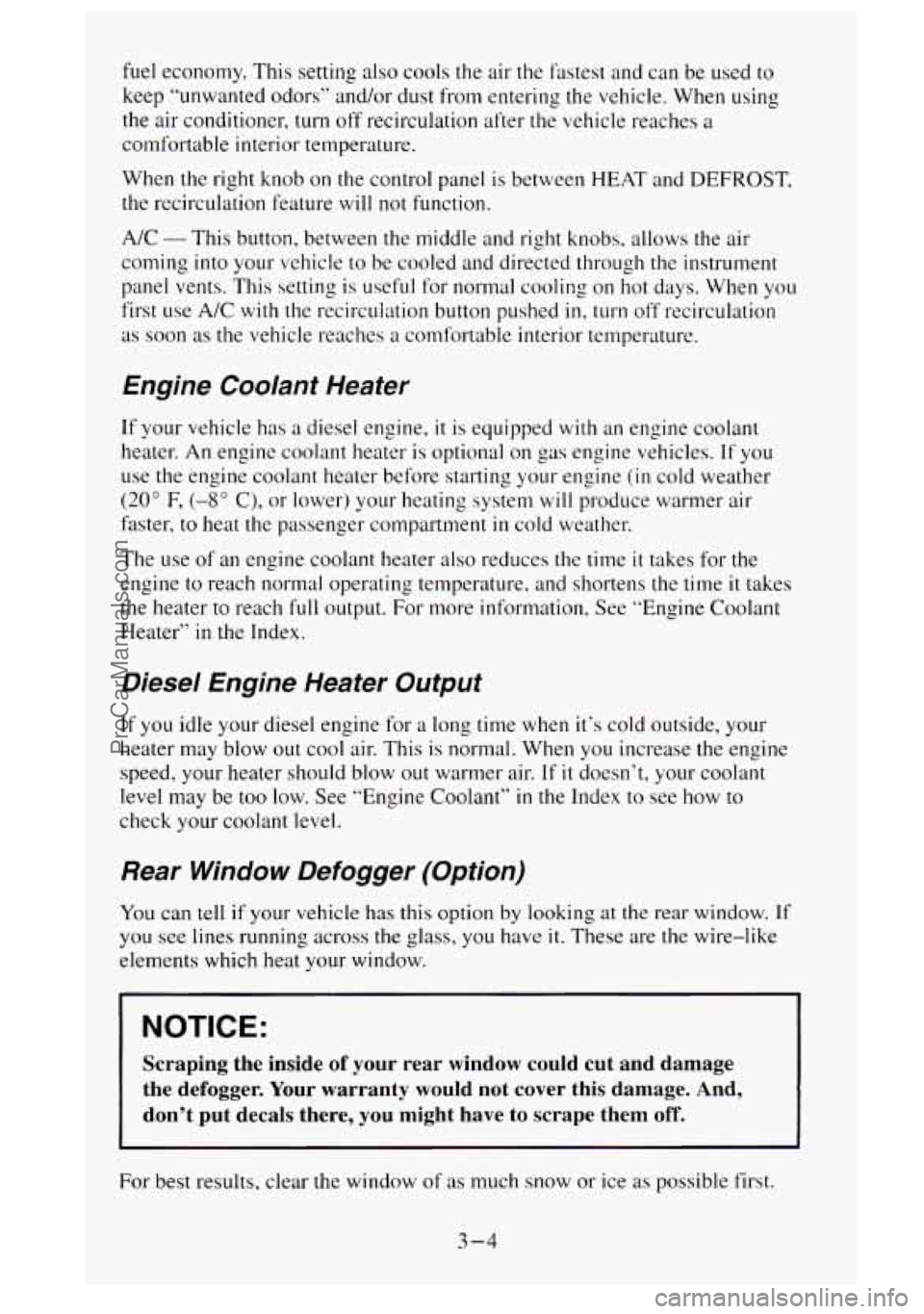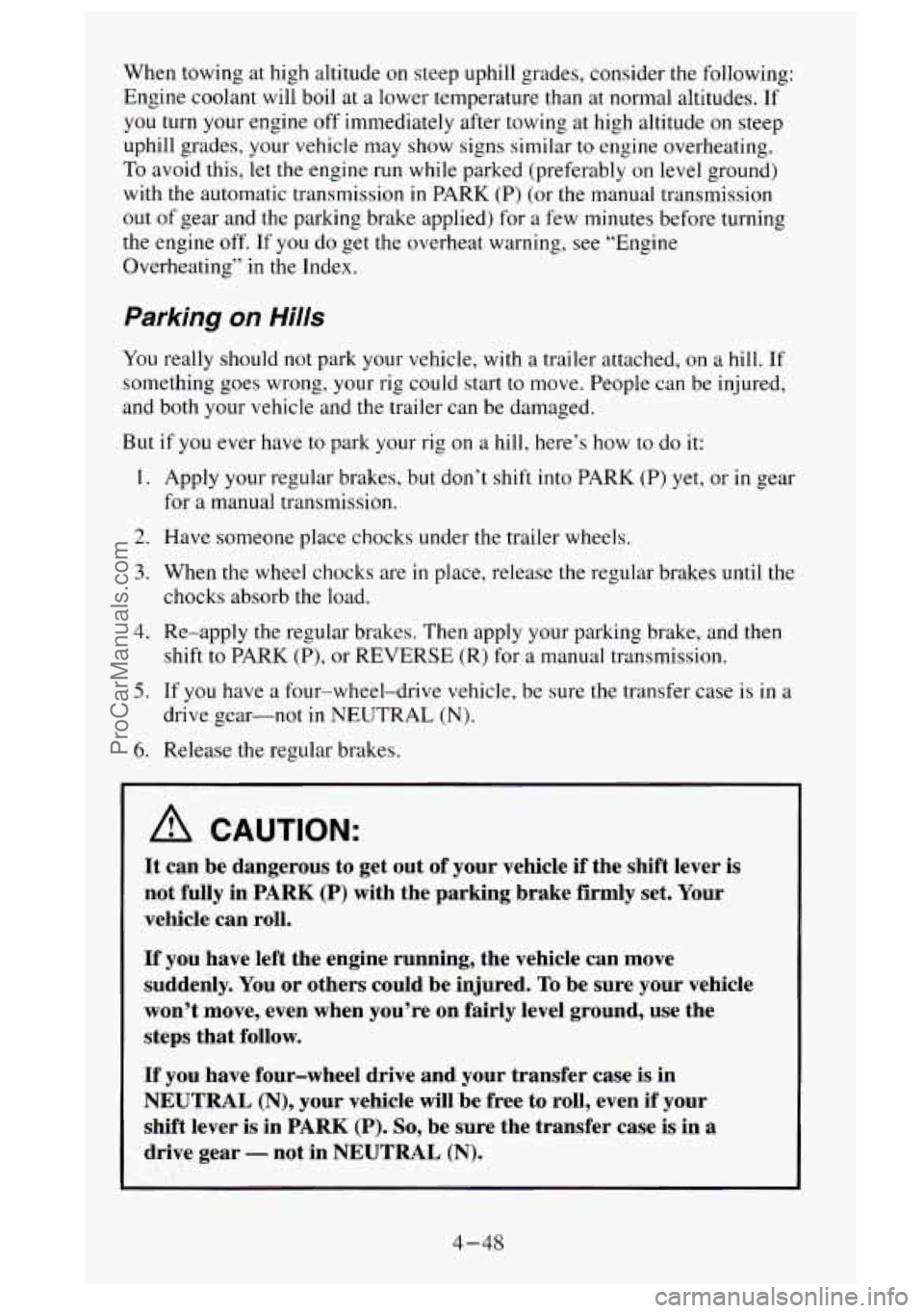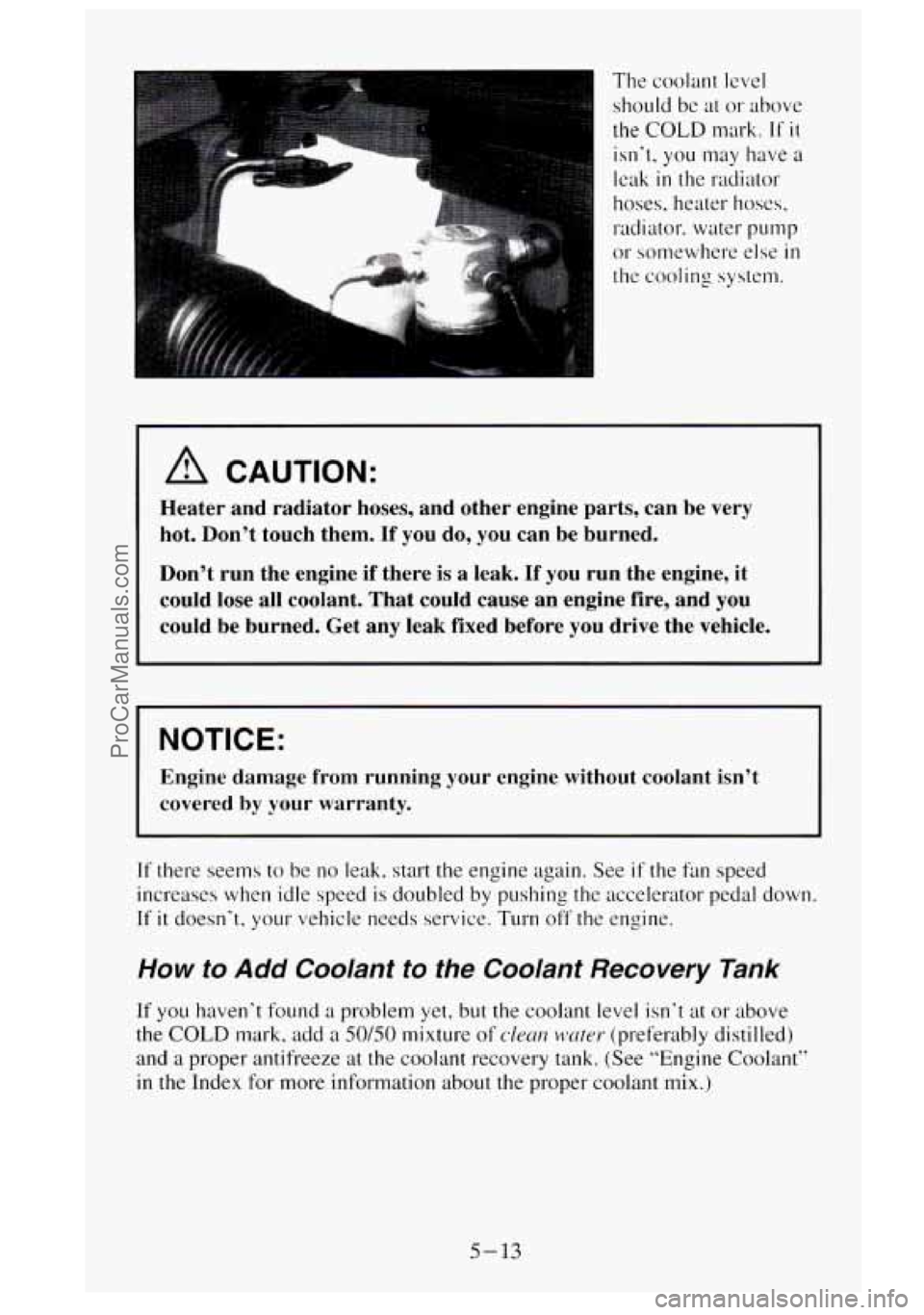Page 150 of 488

fuel economy. This setting also cools the air the fastest and can be used to
keep “unwanted odors” and/or dust from entering the vehicle. When using
the air conditioner, turn off recirculation after the vehicle reaches
a
comfortable interior temperature.
When
the right knob on the control panel is between HEAT and DEFROST,
the recirculation feature will not function.
A/C - This button, between the middle and right knobs. allows the air
coming into your vehicle
to be cooled and directed through the instrument
panel vents. This setting is useful for normal cooling
on hot days. When you
first use
A/C with the recirculation button pushed in, turn off recirculation
as soon as the vehicle reaches a comfortable interior temperature.
Engine Coolant Heater
If your vehicle has a diesel engine, it is equipped with an engine coolant
heater.
An engine coolant heater is optional on gas engine vehicles. If you
use the engine coolant heater before starting your engine
(in cold weather
(20” F, (-8” C), or lower) your heating system will produce warmer air
faster, to heat the passenger compartment
in cold weather.
The use
of an engine coolant heater also reduces the time it takes for the
engine to reach normal operating temperature. and shortens the time it takes
the heater
to reach full output. For more information, See “Engine Coolant
Heater” in the Index.
Diesel Engine Heater Output
If you idle your diesel engine for a long time when it’s cold outside, your
heater may blow out cool air. This is normal. When you increase the engine
speed, your heater should blow out warmer air.
If it doesn’t, your coolant
level may be too low. See “Engine Coolant”
in the Index to see how to
check your coolant level.
Rear Window Defogger (Option)
You can tell if your vehicle has this option by looking at the rear window. If
you see lines running across the glass, you have it. These are the wire-like
elements which heat your window.
I NOTICE:
Scraping the inside of your rear window could cut and damage
the defogger.
Your warranty would not cover this damage. And,
don’t put decals there, you might have to scrape them off.
For best results, clear the window of as much snow or ice as possible first.
3-4
ProCarManuals.com
Page 205 of 488
Winter Driving
Here are some tips for winter driving:
0 Have your vehicle in good shape for winter. Be sure your engine
coolant mix is correct.
You may want to put winter emergency supplies in your vehicle.
Include an ice scraper, a small brush or broom, a supply of windshield
washer fluid, a rag, some winter outer clothing, a small shovel,
a flashlight,
a red cloth, and a couple of reflective warning triangles. And, if you will be
driving under severe conditions, include a small bag
of sand, a piece of old
carpet or a couple
of burlap bags to help provide traction. Be sure you
properly secure
these items in your vehicle.
Driving on Snow or Ice
Most of the time, those places where your tires meet the road probably have
good traction.
However, if there is snow
or ice between your tires and the road, you can
have a very slippery situation. You’ll have a lot less traction
or “grip” and
will need to be very careful.
4-31
ProCarManuals.com
Page 222 of 488

When towing at high altitude on steep uphill grades, consider the following:
Engine coolant will boil at a lower temperature than at normal altitudes. If
you turn your engine off immediately after towing at high altitude on steep
uphill grades, your vehicle
may show signs similar to engine overheating.
To avoid this, let the engine run while parked (preferably on level ground)
with the automatic transmission
in PARK (Pj (or the manual transmission
out
of gear and the parking brake applied) for a few minutes before turning
the engine off.
If you do get the overheat warning, see “Engine
Overheating”
in the Index.
Parking on Hills
You really should not park your vehicle, with a trailer attached, on a hill. If
something goes wrong, your rig could start to move. People can be injured,
and both your vehicle and the trailer can be damaged.
But
if you ever have to park your rig on a hill, here’s how to do it:
1.
2.
3.
4.
5.
6.
Apply your regular brakes, but don’t shift into PARK (P) yet, or in gear
for a manual transmission.
Have someone place chocks under the trailer wheels.
When the wheel chocks are
in place, release the regular brakes until the
chocks absorb the load.
Re-apply the regular brakes. Then apply your parking brake, and then
shift
to PARK (P), or REVERSE (Rj for a manual transmission.
If you have
a four-wheel-drive vehicle, be sure the transfer case is in a
drive gear-not in NEUTRAL
(N).
Release the regular brakes.
A CAUTION:
It can be dangerous to get out of your vehicle if the shift lever is
not fully in
PARK (P) with the parking brake firmly set. Your
vehicle can rofl.
If you have Ieft the engine running, the vehicle can move
suddenly. You or others could be injured.
To be sure your vehicle
won’t move, even when you’re on fairly level ground, use the
steps that follow.
If you have four-wheel drive and your transfer case is in
NEUTRAL (N), your vehicle will be free to roll, even if your
shift lever is in
PARK (P). So, be sure the transfer case is in a
drive gear
- not in NEUTRAL (N).
4-48
ProCarManuals.com
Page 234 of 488
Engine Overheating
YOU will find a coolant temperature gage on your vehicle instrument panel.
If
YOU have a diesel engine, you will also find a low coolant light on your
instrument panel.
lf Steam Is Coming From Your Engine
A CAUTION:
Steam from an overheated engine can burn you badly, even if
you just open the hood. Stay away from the engine if you see or
hear steam coming from it. Just turn it
off and get everyone
away from the vehicle until it cools down. Wait until there is no
sign of steam or coolant before opening the hood.
If you keep driving when your engine is overheated, the liquids
in it can catch fire. You or others could be badly burned. Stop
your engine
if it overheats, and get out of the vehicle until the
engine
is cool.
NOTICE:
If your engine catches fire because you keep driving with no
coolant, your vehicle can be badly damaged. The costly repairs
would not be covered by your warranty.
5-10
ProCarManuals.com
Page 236 of 488
Cooling System - Gasoline Engines
When you decide it’s safe to lift the hood, here’s what you’ll see:
A. Coolant recovery tank
B. Engine fan(s)
C. Radiator pressure cap
I A CAUTION:
If your vehicle has air conditioning, the auxiliary electric fan
under the hood can start up even when the engine is not runn\
ing
and can injure you. Keep hands, clothing and tools away from any underhood electric fan.
If the coolant inside the coolant recovery tank is boiling, don’t do anything
else
until it cools down.
5-12
ProCarManuals.com
Page 237 of 488

The coolant level
should be a1 or above
the
COLD mark. If it
isn’t, you may have a
leak in the radiator
hoses. heater hoses,
radiator. water
pump
or somewhere else in
the cooling system.
A CAUTION:
Heater and radiator hoses, and other engine parts, can be very
hot. Don’t touch them.
If you do, you can be burned.
Don’t run the engine
if there is a leak. If you run the engine, it
could lose all coolant. That could cause an engine fire, and you
could be burned. Get any leak fixed before you drive the vehicle.
NOTICE:
Engine damage from running your engine without coolant isn’t
covered
by your warranty.
If there seem to be no leak. start the engine again. See if the fan speed
increases when idle speed is doubled
by pushing the accelerator pedal down.
If it doesn’t, your vehicle needs service. Turn off the engine.
How to Add Coolant to the Coolant Recovery Tank
If you haven’t found a problem yet, but the coolant level isn’t at or above
the COLD mark, add
a SO/SO mixture of c.lea12 water (preferably distilled)
and
a proper antifreeze at the coolant recovery tank. (See “Engine Coolant”
in the Index for more information about the proper coolant mix.)
5-13
ProCarManuals.com
Page 238 of 488
NOTICE:
In cold weather, water can freeze and crack the engine, radiat\
or,
heater core and other parts. Use the recommended coolant.
5-14
ProCarManuals.com
Page 239 of 488
When the coolant in the coolant recovery tank is at or above the COLD
mark. start your vehicle.
If the overheat warning continues, there’s one more thing you can try. You
can add
the proper coolant mix directly to the radiator, but be sure the
cooling system
is cool before you do it.
A CAUTION:
Steam and scalding liquids from a hot cooling system can blow
out and burn you badly. They are under pressure, and if you
turn the radiator pressure cap
- even a little - they can come
out
at high speed. Never turn the cap when the cooling system,
including the radiator pressure cap, is hot. Wait for the cool\
ing
system and radiator pressure cap to cool if you ever have to turn
the pressure cap.
5- 15
ProCarManuals.com